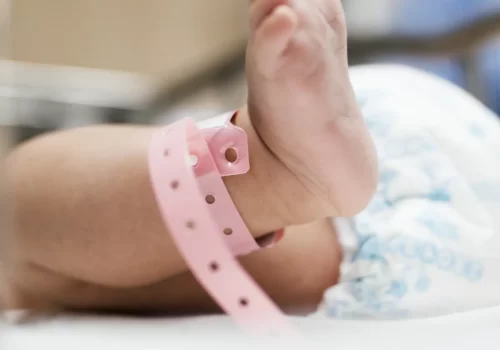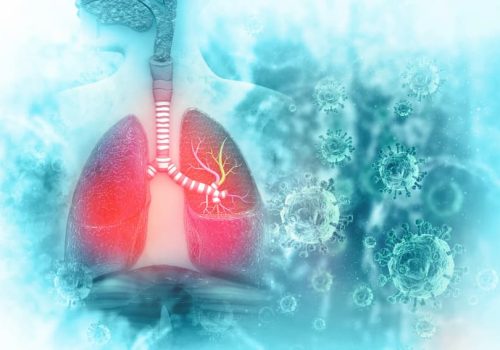Vertex Pharmaceuticals headquarters in Boston, Massachusetts.
World Diabetes Day was commemorated on November 14 to raise public awareness of the impact of this disease. A disorder that already affects more than 578 million people worldwide.
In Colombia, diabetes is already the sixth leading cause of death. There are 3.5 million people between 20 and 79 years of age suffering from this disease and it is estimated that it will reach 4 million in 2030.
Despite the strength of these data, cell therapy also brings good news for type 1 diabetes, which does not produce insulin and has no cure.
Before learning about this new study, let’s remember some key facts about insulin and diabetes.
Insulin, the master key to cellular energy.
Diabetes is a chronic disease that affects the process that converts food into energy.
The body breaks down much of the food into glucose, which it releases into the bloodstream. This glucose is an important source of cellular energy. For it to pass from the blood into the cells, we need the hormone insulin, produced by beta cells (highly specialized cells located in structures of the pancreas called islets of Langerhands).

With diabetes, the body does not produce enough insulin, or the cells do not respond adequately to this hormone. As a result, glucose accumulates in the bloodstream and in the long term can lead to serious health problems such as cardiovascular disease, vision loss, ulcers, etc.
In addition to its function as a “gateway” for glucose into cells, insulin also regulates blood glucose levels: if the amount is too high, insulin signals the body to store the excess in the liver, and it is not released until blood glucose levels fall.
According to the World Health Organization (WHO), a normal range for fasting blood sugar (the amount of glucose in the blood at least eight hours after a meal) is between 70 and 100 mg/dl. Between 100 and 125 mg/dl is referred to as impaired basal glycemia and 126 mg/dl or higher are diagnoses of diabetes. Below 70 mg/dl, we would speak of hypoglycemia.
It should be noted that the normal blood glucose level varies from one person to another depending on factors such as age, physical activity, medication intake, etc.

Diabetes, a disease with 2 faces
There are 2 ways of developing diabetes mellitus: type 1 diabetes (DM1) and type 2 (DM2).
In type 1 diabetes…
- Affects a small percentage of people with diabetes (5-10%).
- There are no known habits or guidelines to prevent it.
- The immune system attacks insulin-producing cells in the pancreas.
- Patients usually receive insulin daily by injection or infusion.
- It is usually diagnosed in children, adolescents and young adults.
- Symptoms usually appear quickly (frequent urination, thirst, hunger and weight loss even when eating, extreme fatigue, blurred vision, cuts that take time to heal…).
In type 2 diabetes…
- Affects the vast majority of people with diabetes (90-95%).
- The body does not use insulin properly and cannot maintain normal glucose levels.
- Symptoms tend to appear slowly and sometimes there are no symptoms.
- Patients require insulin when oral antidiabetics and other non-pharmacological measures are no longer effective.
- It is usually diagnosed in adults.
- It can be prevented and delayed with healthy habits (weight loss, regular physical activity, balanced diet).
Due to the absence of symptoms in DM2, it is estimated that there are 240 million people in the world living with undiagnosed diabetes. Hence the importance of regular testing.
In addition to DM1 and DM2, there is gestational diabetes in pregnant women who have never had the disease. It usually disappears after delivery, but increases the risk of type 2 diabetes later in life, both in the mother and in the infant’s childhood or adolescence.
Clinical trial: a before and after in the fight against DM1
Surely, the quality of life of millions of DM1 patients would improve if they did not have to inject insulin daily.
A much closer possibility, if we consider the recent study led by Dr. Trevor Reichman, surgical director of the Pancreas and Islet Transplant Program at the Ajmera Transplant Centre of the University Health Network in Toronto (Canada).
The clinical trial has been developed in 6 long-term DM1 patients with severe hypoglycemia: zero insulin production (they required an average of 34 units of insulin per day) and a history of severe low blood glucose levels on a regular basis.
The therapy consisted of infusing them with islet cells derived from insulin-producing stem cells that essentially replace islet cells damaged by the immune system.
These new cells, fully differentiated and derived from allogeneic stem cells, have been named VX-880 by Vertex Pharmaceuticals, the laboratory promoting the research in which the cells were cultured.
Results that give more life to cell therapy.
Although the research is not yet complete, the results demonstrate that an experimental form of islet stem cell therapy improves blood sugar control and reduces insulin requirements:
All study participants have more than 90 days of follow-up and have demonstrated successful cell transplantation and insulin production responsive to mealtime glucose.
After one year of follow-up, 2 participants were able to completely eliminate severe low blood glucose levels while maintaining an A1c (snapshot of blood sugar levels over time) below 7%.
In addition, 3 patients in the study became insulin independent after 6 months of VX-880 therapy.
According to Dr. Reichman, “islet cells have the potential to cure diabetes, and this study is a breakthrough in that direction.”
In turn, Dr. Reichman highlights the impact of the research on patients’ quality of life and life expectancy: “All of these patients had long-standing difficult-to-manage type 1 diabetes with life-threatening complications, including severe unnoticed hypoglycemia.”
Unnoticed hypoglycemia means that a person cannot detect when his or her blood glucose level is low, and consequently does not know that he or she needs to treat it.
Despite the good results, there are still obstacles to applying the treatment, such as the need for immunosuppressive drugs to prevent rejection of allogeneic stem cells. However, Dr. Reichman states that “the future goal is to create a version of the treatment that does not require immunosuppressive therapy”.
Dr. John Buse, director of the Diabetes Care Center at the University of North Carolina, reviewed the research findings and stressed the importance of patients not needing organ donors to have a source of insulin-producing cells for transplantation.
The study was presented at the meeting of the European Association for the Study of Diabetes, Hamburg, Germany, October 3, 2023.
An injection of the future for regenerative medicine
Dr. Reichman’s clinical trial has been a major step in raising awareness of the enormous potential of cell therapy in chronic degenerative diseases such as DM1.
A breakthrough that joins many others in making millions of patients smile at their future. This evolution was especially evident when last June, the FDA approved the first cell therapy to treat patients with DM1.
From America Cell Bank, we dedicate special attention to the achievements in the fight against DM1 achieved by researchers around the world, as well as the results of cell therapy in cardiovascular diseases, multiple sclerosis, COPD, Alzheimer, Parkinson, rheumatic diseases, childhood cancers, etc.
Each clinical success gives more meaning to our effort: bringing excellence in family biomedicine to thousands of people who need an infusion of hope in their daily lives.
Sources:
- https://www.eurostemcell.org/es/diabetes-como-pueden-ayudar-las-celulas-madre#:~:text=Los%20pacientes%20con%20diabetes%20de,insulina%2C%20como%20las%20c%C3%A9lulas%20beta
- https://es.beyondtype1.org/estudio-ensayo-clinico-vertex-easd/
- https://www.vrtx.com/our-science/pipeline/
- https://www.healthline.com/health/es/insulina
- https://www.healthline.com/health/es/diferencia-entre-diabetes-tipo-1-y-tipo-2#sintomas
- https://www.cdc.gov/diabetes/spanish/basics/diabetes.html#:~:text=La%20diabetes%20es%20una%20enfermedad,libera%20en%20el%20torrente%20sangu%C3%ADneo
- https://www.sediabetes.org/comunicacion/sala-de-prensa/espana-es-el-segundo-pais-con-mayor-prevalencia-de-diabetes-de-europa/#:~:text=Se%20calcula%20que%20globalmente%20hay,millones%20de%20d%C3%B3lares%20en%202021
- https://www.epdata.es/datos/diabetes-espana-datos-graficos/472#:~:text=La%20Federaci%C3%B3n%20Internacional%20de%20Diabetes,del%20Atlas%20de%20la%20Diabetes
- https://consultorsalud.com/principales-causas-muerte-colombia-2022/#:~:text=De%20acuerdo%20con%20el%20DANE,v%C3%ADas%20respiratorias%20que%20cobraron%2012.857
- https://medlineplus.gov/spanish/ency/patientinstructions/000327.htm#:~:text=La%20diabetes%20puede%20dificultar%20el,las%20piernas%20y%20los%20pies
- https://www.infobae.com/salud/2023/10/05/la-terapia-con-celulas-madre-podria-ser-un-avance-contra-la-diabetes-tipo-1/


















